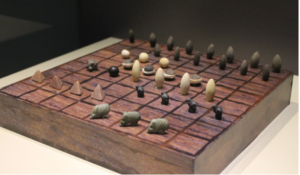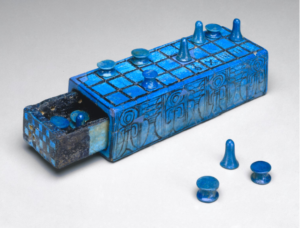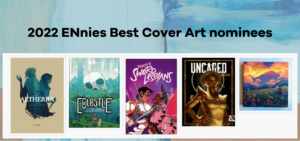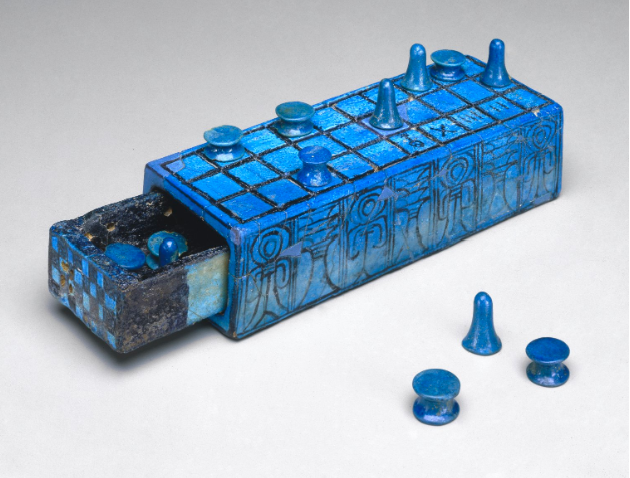The Changing Landscape of Game Box Art
By Elise Rezendes
Note from the editor: For the first time, GPI’s newsletter has a guest writer. I had been wanting to write an  article about the beauty of game box art and then had the good fortune to meet Elise when she chose GPI as her manufacturer for an upcoming Kickstarter, The Session Zero System. The art for her game was just stunning and how she spoke about working with the artist was inspiring. So in short, I recognized a gift as it landed in my lap and recruited Elise to tackle this topic. Â
article about the beauty of game box art and then had the good fortune to meet Elise when she chose GPI as her manufacturer for an upcoming Kickstarter, The Session Zero System. The art for her game was just stunning and how she spoke about working with the artist was inspiring. So in short, I recognized a gift as it landed in my lap and recruited Elise to tackle this topic. Â

This is the first in a two-part article series exploring what we have put on the boxes that hold our games; from ancient times to now. The landscape of Box Art has gone through substantial changes over the centuries and to fully appreciate the journey we’re going to start with the closest we’ve found to be the beginning of it!
Tucked in the corner of a burial site; a small mound of several matching glass and stone pieces is found on a hot day along the upper Tigris River in Turkey’s south-eastern Siirt province. Momentarily insignificant in the face of all other finds at the tomb; these pieces were dutifully kept and cataloged with the rest of the artifacts. It wasn’t until some months later that the importance of this find was made clear; this was possibly the oldest evidence of board game pieces yet to be unearthed! Dating to the Early Bronze Age with radiocarbon dating traced the grave goods back to 3100-2900 B.C.; the BaÅŸur Höyük burial pieces are still our earliest possible example of such game pieces.
tomb; these pieces were dutifully kept and cataloged with the rest of the artifacts. It wasn’t until some months later that the importance of this find was made clear; this was possibly the oldest evidence of board game pieces yet to be unearthed! Dating to the Early Bronze Age with radiocarbon dating traced the grave goods back to 3100-2900 B.C.; the BaÅŸur Höyük burial pieces are still our earliest possible example of such game pieces.
But this game was found without a board or box. Perhaps it was not originally entombed when the items were placed there or maybe time ravaged a less hearty material than stone and glass. Either way, archeologists were left with little clues as to how to play this ancient game.
The role Box Art fills has morphed over the many years humans have been making games. Some of our earliest and most detailed examples can be found in Senet, an Egyptian game where the box itself acts as the playing board. The oldest discovered example was dated to c. 2620 BCE from the Mastaba of Hesy-Re. In this game, Small pieces are played along on a gridded top while hieroglyphs showcase things like the names of different important gods, Pharaohs, or heads of state. Designed with artistry and skill these detailed but utilitarian forms speak very much to their place in society at the time. Similar games with this functional design include Go!, Backgammon, Mancala, Chess, and Shut The Box. All can be found in some form historically with the board designed on top of or within the box holding the pieces. Admittedly some may be found to be more ornate than others but all held the same core functionality.Â
With the mass production of games starting in the late 19th century, alongside advances in printmaking and multi-color chromolithography, the world saw its largest shift in the industry yet. No longer a luxury held only but the elite in a society; competition starts driving ingenuity and innovation in game designs like never before. Suddenly, marketing elements entered the chat. As products needed to beat out others for shelf space the function of Box Art instantly transformed. There was an explosion of bold typefaces, colorful designs, logos, patterns, and more! Anything to catch a passing glance and create brand recognition to stick firmly in a buyer’s mind! Games such as Monopoly, Life!, Snakes and Ladders, Candy Land and others hail from this era of games. Many of these find themselves still firmly rooted with nostalgia in the industry.
And then a third age began. With the rise of more affordable manufacturing options and crowdfunding platforms to help break monetary barriers, a wave of Indie games crashed into the world! Less dictated by market forces or financial constraints; the selection and artistry continue to this day to expand exponentially.Â
Nowadays, many mysteries a game has in its design can begin to be deciphered by the box it comes in. From marketing and setting tone, to showcasing incredible artistic skill; Box Art wears many hats and is a gamer’s first interaction with the works tucked inside. It acts as an attractor, a sampler and a sneak peek! It is a colorful flower in a garden of many looking to catch the attention of a wandering gamer. It is also a billboard letting the prospective buyer know what may be found inside. And lastly, it sets the tone and timber of the game; a sneak peek of the style or mood of the game inside.Â
A truly ingenious design is a balanced blend of all three of these elements in harmony while being a beautiful expression of the artist creating it.Â
And all this work is getting recognized! Not only by the folks buying board games in higher numbers than ever before, but new  categories also continue to be added to awards celebrating the best in the industry. Places such as the ENnies, Games Hub’s ‘Golden Meeple’, and BoardGameGeeks ‘The Golden Geek’ Award are just a few such ones that include categories for Cover Art.
categories also continue to be added to awards celebrating the best in the industry. Places such as the ENnies, Games Hub’s ‘Golden Meeple’, and BoardGameGeeks ‘The Golden Geek’ Award are just a few such ones that include categories for Cover Art.
Thus far; a journey of thousands of years and millions of games with many more twists and turns in the road yet to come.Â
For now, this is where the adventure ends. In Part 2 of this article series, we’re going to explore some incredible examples of Box Art that tell the story of the games they carry inside!Â


Recent Comments